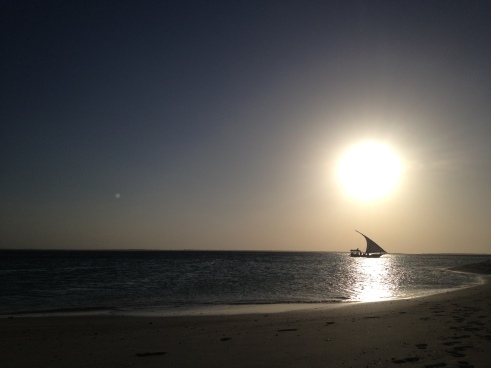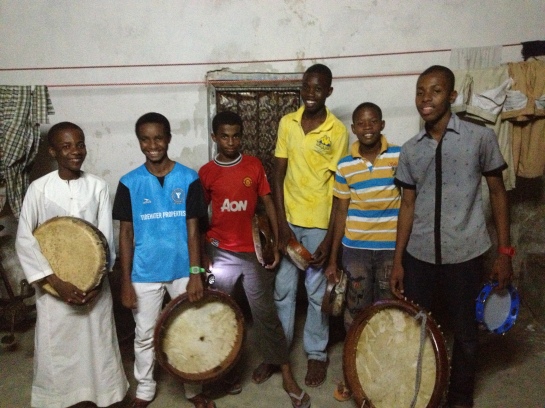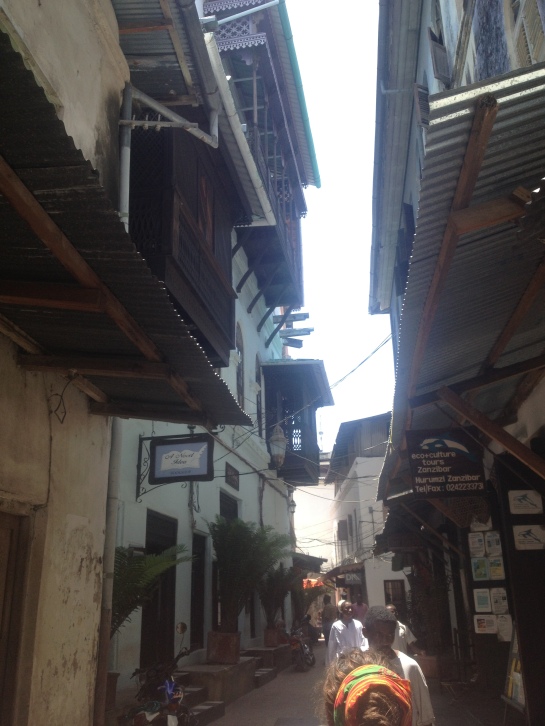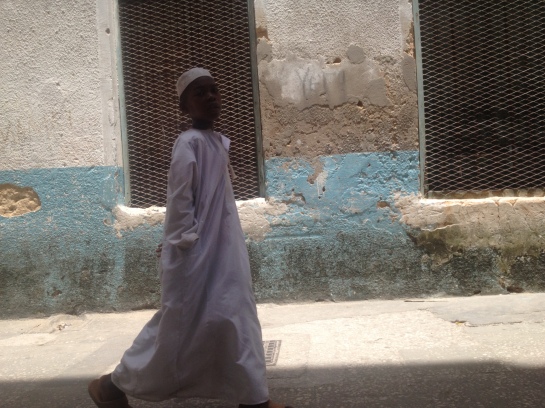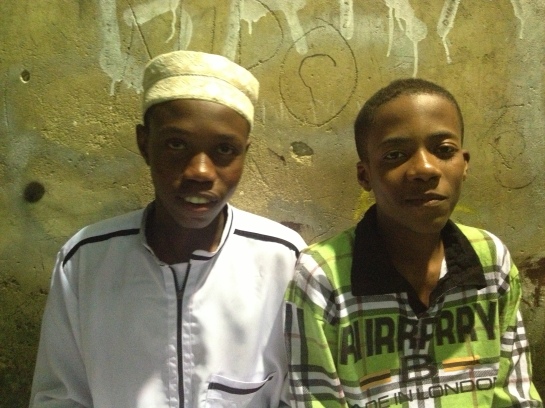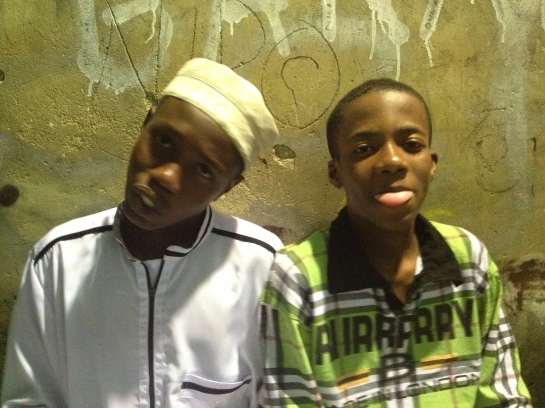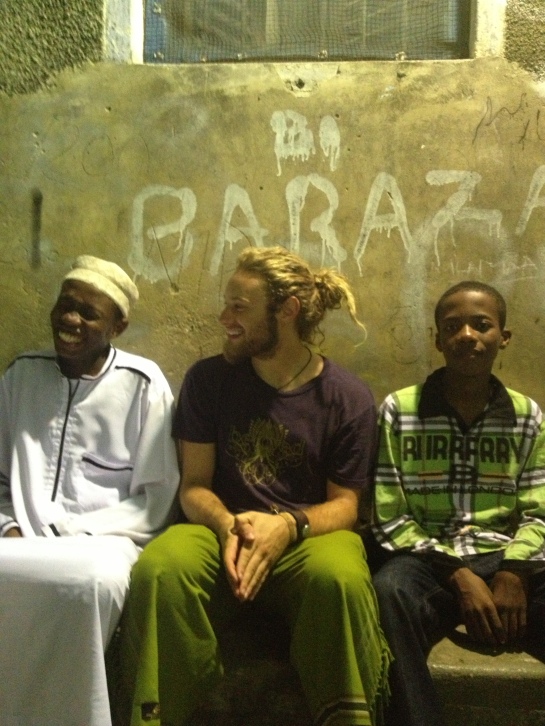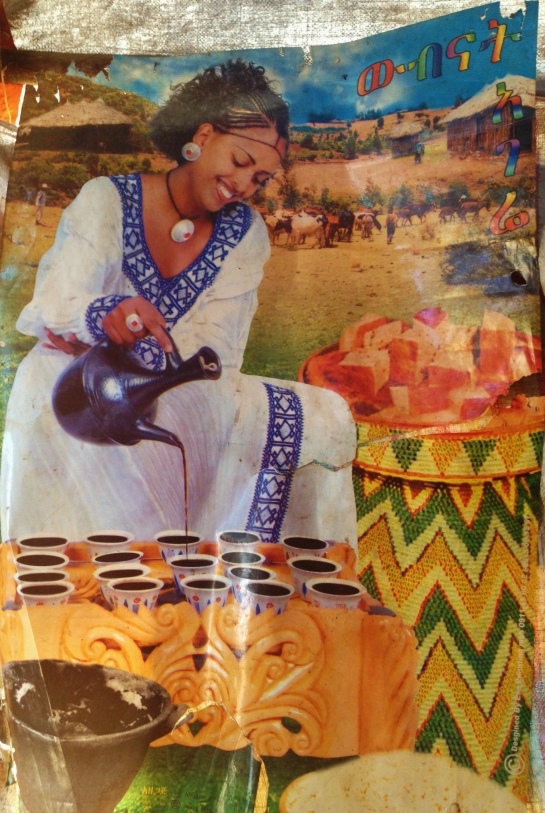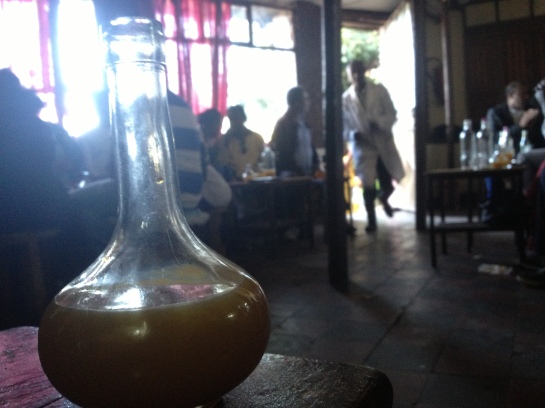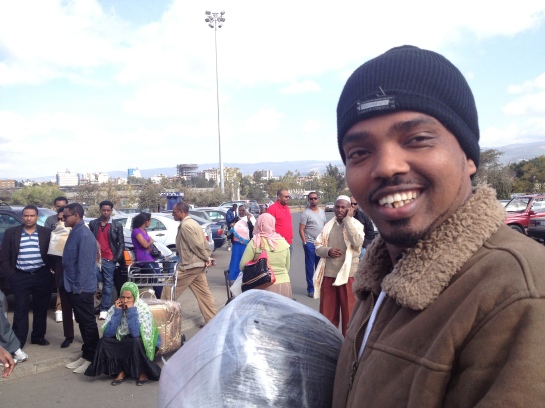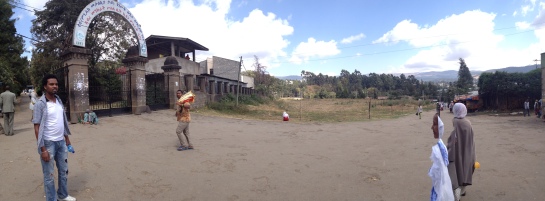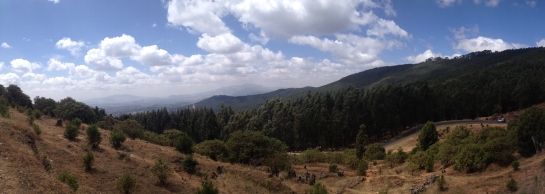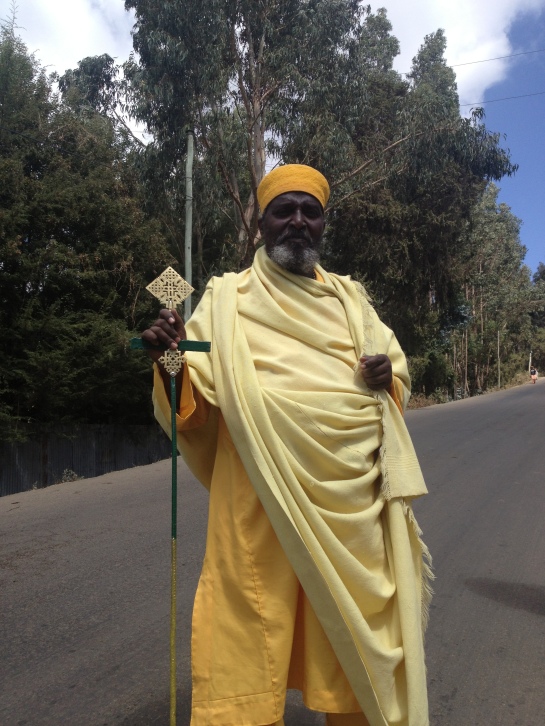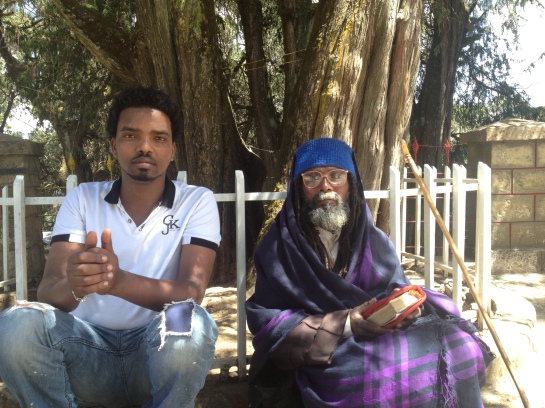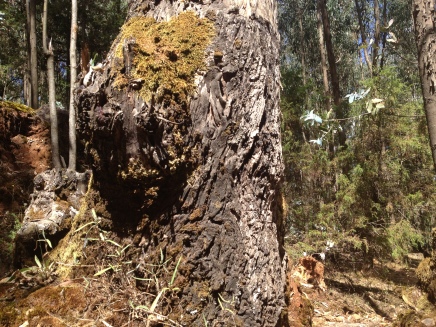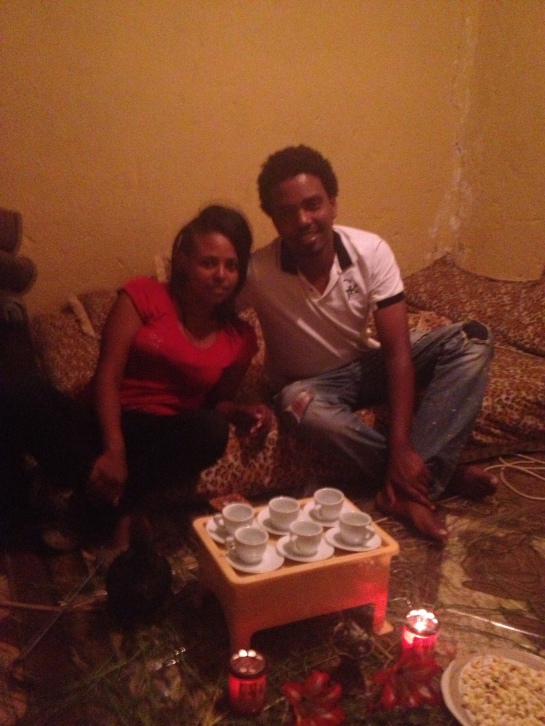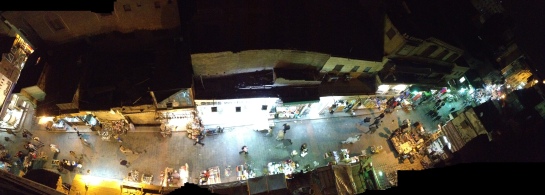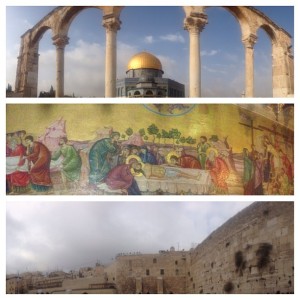After living in Zanzibar for a month, you eventually learn how to navigate the utter labyrinth that is Stone town. One hot and aimless night, adrift amidst the humidity and fascinating sensoria, the distant sound of drums and muffled singing beckoned me to change my course. Zig-zagging my way through a series of narrow side streets and crippled alleyways (the average Zanzibari street seems no more than ten feet wide,) I found these lively sounds emitting from the second story window of an anonymous building on a small, dimly lit street. Besides the daily calls to prayer and the religious meanderings that issue out of Mosques (and not counting the conspicuously international Sauti za Busara festival,) this was the first time I heard live music happening organically in Zanzibar. The music slowly rose in intensity and volume, until it conjured up a little crowd of half naked children who began to scream and dance in the streets, screeching in a joyful frenzy.
I waited until the music finished, and found a group of about 15 adolescent boys between the ages of thirteen and sixteen, all dressed in traditional white Islamic clothes, pouring out into the street. They were each carrying these massive frame drums and a few small tambourines. I met the teacher, a young man himself, and while walking with him to his house around the corner, I arranged for a casual recording session to take place later that week.
This was not a normal thing in Zanzibar. Not once did I see anyone playing music on the street. Any time I saw live music advertised in town it was primarily catering to tourists who could afford a luxurious evening listening to “traditional Taraab music” while eating at one of Zanzibar’s fine dining establishments (and they are very fine.) There was also the Dhow Countries Music Academy, a reputable center for traditional acoustic music, but admittedly a foreign endeavor, having been established by American expats living on the island. All this struck me as rather strange for a tropical island off the coast of Tanzania, with such a wealth of cross-cultural inheritance, to have such little in the way of live music.
This music, however, can be found all over the Island. Known throughout Islam as Qaswidah, its origins lie in the southern Arabian peninsula, specifically Oman and Yemen, the cultures which for centuries dominated and therefore shaped much of Zanzibari culture. Traditionally it is only played during Islamic rituals such as Moulidi (birthdays remembering the Prophet Mohammed or other important figures,) weddings, births, Eid (Persian New Year,) and Hajj (pilgrimage.) The music is sung both in Arabic and Swahili (a distinctly Zanzibari combination,) and is meant to encourage “positive behavior” according to the Muslim faith.
What struck me as particularly endearing about this music, from the very first time I heard it, was that it was being played by youth. It is not played with mastery, clarity of pitch, and rhythmical precision (though one day, I’m sure they will get there.) Yet it is played with heart and authenticity which is what hooked me when I first heard it echoing through Stone Town’s shadowy streets. It’s not perfect, but this lively group of young Zanzibaris sing with genuine passion, and because of that I cant help but smile.
A few days after our recording session, I spoke with two foundational members of the group. Hajji Bakari Ali and Mundhir Abu Baker Mdungi, both eighteen years-old, have been playing Qaswidah music for most of their lives. They teach this music to a group of younger boys, fifteen in total, which was the group I encountered several nights before. They teach the music simply because they want to continue the tradition- an admirable impulse that seems harder and harder to find amongst Africa’s younger populations. This music, they said, makes them feel grounded in their religion, serving as a reminder of God (Allah,) and their Islamic tradition. I ask Mundhir why he seeks this type of musical experience out, as opposed to the more popular and mainstream Bongo Flavor music that is popular all over Tanzania. “I am Muslim,” he answers simply.
Yet there is another dimension to these young musicians that I came to just barely understand only after talking with them for some time (with the help of a translator/friend.) Hajji, the more reserved of the two, actually enjoys the Bongo Flavor music, while Mundhir would like to one day play in a Reggae band- a music loved all over Africa, and particularly in Zanzibar. But here is the kicker: Islam, the religion which they actively reinforce through their playing of Qaswidah, forbids these types of musics. In fact, Islam in its more conservative expressions, prohibits all types of music and dance that are not explicitly Islamic. The fact that these young musicians passionately sing about Islamic models of proper behavior, while secretly hoping to one day play Reggae and dance to Bongo Flavor is, to me, a paradox. Perhaps it speaks to the never ending dilemmas that arise when someone seeks to be both grounded in their tradition, as well as a citizen of the modern, globalized world. Perhaps it implies even more than I am able to realize now.
Neither Hajji nor Mundhir considered music a realistic path, socially or financially. Hajji wants to be an engineer, and Mundhir a pilot or an engineer as well. The thought of trying to pursue music professionally, even the Islamic Qaswidah, seemed an outlandish fantasy. This is primarily because Zanzibar’s deeply Muslim culture does not encourage music, despite the desire for it. To think that these young musicians are doing the Islamic establishment a huge service by teaching Qaswidah music does not seem to make a difference- they still will receive little support. I could see both Hajji and Mundhir becoming slightly uncomfortable by me asking this question, as if they had either never considered it before, or chose to ignore this hypocrisy.
Yet I feel tempted, if not impelled to say that what is strangling the full musical expression of these young people is not their faith. If Islam was solely responsible for the dearth of live music culture I found in Zanzibar, then why was there such a profusion of it in places like Senegal, Egypt, and Mali, deeply Islamic cultures, yet famous for their thriving musical traditions?
After this discussion, my translator friend, a local Zanzibar who is pursing a career in the entertainment/music and event production world, explained some of the difficulties about being a young, creative person in Zanzibar. “You and I both know there is much talent in Zanzibar. The problem is that no one is encouraged, no systems to help artists and musicians develop.” He continued, explaining how the strong influence of Islam here does in fact contribute to the absence of live music culture. “You have no idea how much Islam factors into peoples lives. When I grew up, I could not leave the house without reciting certain lines from the Koran, without praying to God. My father made me. Its just the way it is here.”
No discussion of Zanzibar can be complete without mentioning its legacy of slavery. It is, at first glance, exotic and novel to see so many Africans dressed in full Islamic garb, speaking Arabic, and displaying the courtesies found only in the Muslim world. Though if you dig only a few layers deeper, it is no secret that the Arabs were the driving force behind the slave trade in East Africa, with Zanzibar as their base. Truly, a large portion of the Zanzibari population has its roots in bondage- their ancestors being brought here as slaves, forcibly captured (or sold out by other African leaders,) and marched for miles to the coast in massive caravans driven by the Arabs, who were getting rich off this barbarous activity. To think that most Zanzibaris are deeply proud of their Muslim heritage is yet another paradox, one that I find infinitely more sinister and profound.
Throughout my time in Zanzibar, I sensed a palpable thirst for live music and freedom of expression- a deeply rooted impulse that felt like a growing, electric bubble full of creative energy ready to burst amongst the youth. As an outlet for this stifled creative flow, one can see multitudes of young people gathering near the beaches every night, practicing a great variety of acrobatic tricks, howling in joy. Usually a scene emerges on the edges of the famous Forodhani Gardens, where one can witness a crowd of young people twisting their way through the air as they jump twenty feet off the sea wall. It is a nightly ritual here- the feeling of joyful release is palpable as hordes of young Zanzibari men hurl themselves into the warm water, an antidote to the days heat and hustle.
People must express themselves in any way they can, even if it means jumping twenty feet into the shallow, rock-strewn ocean- its bright blue vastness a reminder of dreams as big as the sky, and of what it feels like to be utterly free.
